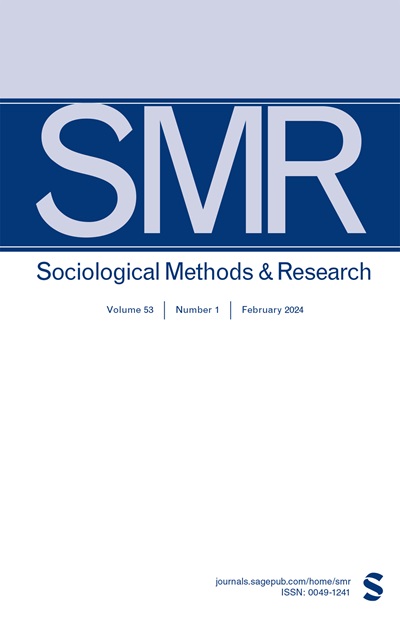A Theory of Higher Order Interactions Between Sensitive Variables: Empirical Evidences and an Application to a Variety of Smoking
IF 6.5
2区 社会学
Q1 SOCIAL SCIENCES, MATHEMATICAL METHODS
引用次数: 3
Abstract
In carrying out surveys involving sensitive characteristics, randomized response models have been considered among the best techniques since they provide the maximum privacy protection to the respondents and procure honest responses. Over the years, researchers have carried out studies on the estimation of proportions of the population possessing sensitive characteristics. However, there is a paucity of research studies that have addressed higher order interactions between these sensitive characters. In this article, we develop a new theory based on three proposed randomized response models which we name as: simple model, semi-crossed model, and fully crossed model. Twenty-one new unbiased estimators of seven parameters are introduced, their variance expressions are derived, and unbiased estimators of variances are developed. The three models are compared under various values of the parameters by computing the percent relative efficiency of one model over another model. The most efficient model is then applied to study the population proportions of three varieties of smoking habits among students, and their first- and second-order interactions. The last four sections (Ninth to Twelfth) are verifications of theoretical results using the Cramer–Rao lower bounds of variances for the developed 21 new estimators in randomized response sampling.敏感变量之间的高阶相互作用理论:经验证据及其在各种吸烟中的应用
在进行涉及敏感特征的调查时,随机反应模型被认为是最好的技术之一,因为它们为受访者提供了最大程度的隐私保护,并获得了诚实的回答。多年来,研究人员对具有敏感特征的人口比例的估计进行了研究。然而,研究这些敏感特征之间的高阶相互作用的研究很少。在本文中,我们在三种随机响应模型的基础上发展了一个新的理论,我们将其命名为简单模型、半交叉模型和完全交叉模型。引入了7个参数的21个新的无偏估计量,推导了它们的方差表达式,并给出了方差的无偏估计量。通过计算一种模型相对于另一种模型的相对效率百分比,对三种模型在不同参数值下进行了比较。然后将最有效的模型应用于研究学生中三种吸烟习惯的总体比例,以及它们的一阶和二阶相互作用。最后四节(第九至第十二节)是使用随机响应抽样中开发的21个新估计量的Cramer-Rao方差下界验证理论结果。
本文章由计算机程序翻译,如有差异,请以英文原文为准。
求助全文
约1分钟内获得全文
求助全文
来源期刊

Sociological Methods & Research
Multiple-
CiteScore
16.30
自引率
3.20%
发文量
40
期刊介绍:
Sociological Methods & Research is a quarterly journal devoted to sociology as a cumulative empirical science. The objectives of SMR are multiple, but emphasis is placed on articles that advance the understanding of the field through systematic presentations that clarify methodological problems and assist in ordering the known facts in an area. Review articles will be published, particularly those that emphasize a critical analysis of the status of the arts, but original presentations that are broadly based and provide new research will also be published. Intrinsically, SMR is viewed as substantive journal but one that is highly focused on the assessment of the scientific status of sociology. The scope is broad and flexible, and authors are invited to correspond with the editors about the appropriateness of their articles.
 求助内容:
求助内容: 应助结果提醒方式:
应助结果提醒方式:


